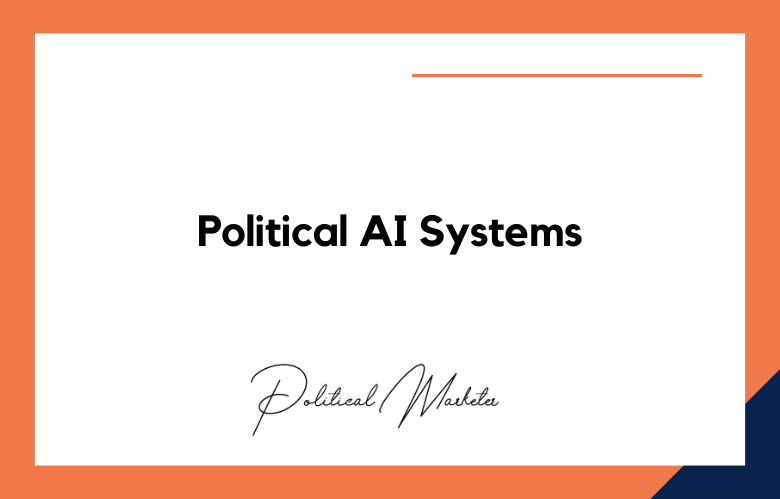Digital transformation has changed businesses’ operations, and political parties must follow suit. Technology allows political parties to connect with their members and supporters, mobilize the grassroots, and win elections. However, the digital landscape constantly evolves, and political parties need a playbook to stay ahead of the curve. Provides a guide for the digital transformation of a political party’s operations. Digital technologies have transformed the traditional model of political campaigning and redefined how parties engage with their audiences. We aim to explore the digital transformation of political party operations and understand how it affects the political parties’ playbook.
What is Digital Transformation of Party Operations?
Digital transformation has revolutionized the way parties operate. It refers to integrating technology into every aspect of party operations, from campaigning to fundraising to communication.
It streamlines processes, creates efficient systems, and ultimately makes parties more effective. With digital transformation, parties can reach a wider audience, raise more funds, and engage with voters in real-time.
How are Political Parties Using Digital Transformation
Political parties implement digital transformation using various digital tools, such as social media platforms, websites, email marketing, and mobile apps.
Social media platforms are vital tools for political parties. They allow them to create targeted ad campaigns, share news updates, and engage with voters.
Political parties also use email marketing to communicate with their supporters, donors, and volunteers. They use mobile apps to track voter engagement and raise funds through donations.
How Digital Transformation Helps in Election Success
In the digital age, election success depends on an effective digital strategy. Digital transformation allows parties to reach voters across different platforms, engage with them in real-time, and tailor their messaging based on voter preferences.
With digital transformation, parties can target swing voters and build a coalition of supporters, which is critical to winning elections.
Understanding the Political Parties Playbook: Digital Transformation of Party Operations
Political parties play a vital role in shaping democracy. They represent citizens, advocate for their interests, and implement policies that make a tangible difference in their lives.
Over the years, political parties have undergone various transformations, and now, they have moved into the digital world. Digital transformation has become a fundamental part of party operations. We will discuss the political parties’ playbook: digital transformation of party operations.
Unveiling the Political Parties Playbook: The Digital Transformation of Party Operations
The world as we know it has gone digital with tremendous technological strides over the last few decades.
The political landscape has also changed, with parties recognizing the importance of incorporating a digital approach to increase outreach. But what exactly is the political parties’ playbook for digitally transforming party operations?
I will delve into the intricacies of digital transformation in politics and how technology is integrated into political parties’ operations.
Digital Transformation of Political Parties: A Playbook for Modern Operations
Political parties are critical players in modern democracies, soliciting votes and winning elections. However, the era of traditional grassroots campaigns is slowly fading as the world becomes more digitalized.
Therefore, political parties must fully utilize digital channels to enhance their operations and gain an edge over opponents. Through digital transformation, parties can improve their messaging, mobilize their supporters, and raise more money for their campaigns.
It dives deep into understanding the political parties’ playbook for digital transformation and how it can revolutionize political campaigns.
Best Practices for A Guide for Digital Transformation of a Party Operations
Build a Robust Website
A political party’s website is the primary digital presence and needs to be more than a brochure website. A robust website should have updated news, multimedia content, interactive features, and calls to action.
The website should also be mobile-friendly and accessible to all users, including people with disabilities. The website’s content should be optimized for search engines and have secure hosting and regular backups.
Use Social Media
Social media platforms are essential for political parties to engage with their supporters, disseminate information, and protest. Parties should identify the social media platforms on which their supporters are most active and establish firm social media profiles.
Parties should also use social media analytics to assess their performance, track engagement, and adjust their social media strategy accordingly.
Leverage Data
Data is the fuel of the digital age, and political parties should use data to gain insights into their members and supporters and make data-driven decisions.
Data can be used to segment supporters, build supporter personas, predict voting patterns, and personalize communication. Parties should also use the best data privacy practices and comply with relevant protection laws.
Engage in Digital Fundraising
Political parties depend on fundraising to finance their campaigns, and digital platforms offer new fundraising opportunities.
Parties can use crowdfunding, cryptocurrency, and online donation platforms to reach new donors and increase donations. Parties should also use digital tools to manage their donor relationships and track the effectiveness of their fundraising efforts.
Train Digital Teams
The success of a party’s digital transformation depends on the skills and knowledge of the people who carry out digital operations.
Parties should invest in digital training programs for their staff and volunteers and ensure a culture of continuous learning.
Parties should also ensure that their digital operations are integrated into their overall strategy and that digital teams have clear roles and responsibilities.
What are the Types of Digital Transformations of Party Operations?
Digital Strategy
The first step towards digital transformation for political parties is to create a comprehensive digital strategy.
This involves reviewing the party’s current digital operations, identifying gaps and areas for improvement, and aligning digital goals with the party’s overall strategy.
This is crucial for ensuring the party’s digital efforts are effective, efficient, and aligned with the party’s overall mission. A solid digital strategy will also ensure that all digital efforts are focused and targeted toward a specific audience.
Digital Campaigns
The second step is creating digital campaigns that resonate with the targeted audience. A successful digital campaign will use a variety of digital channels, such as social media, email marketing, and search engine optimization, to reach potential voters.
A successful digital campaign must also be data-driven, using analytics and metrics to track performance and adjust campaigns as needed. Digital campaigns must also be personalized, engaging, and, most importantly, deliver a message that resonates with the audience.
Cybersecurity
Cybersecurity is a significant concern for political parties, especially with the rise of online threats and cyber-attacks.
Political parties need to create a comprehensive cybersecurity strategy that includes measures to protect against malware, phishing attacks, and other security risks.
The cybersecurity strategy should also include training programs for political staff and volunteers to ensure they know the latest threats and how to respond to them.
Constituent Relationship Management (CRM)
Constituent Relationship Management (CRM) systems are becoming more vital for political parties to manage constituent interactions and track data.
CRM systems centralize data and provide an overall picture of each constituent, including their interests, preferences, and contact histories. This information helps parties create targeted messaging, send personalized communication, and create more effective campaigns.
CRM systems also track donations, volunteering activity, and other interactions with the party, providing valuable insights that can be used to improve operations.
Digital Transformation Culture
The final key to digital transformation for political parties is to create a culture that embraces change and innovation.
Parties can only expect to implement digital transformation after some time, and it requires a fundamental change in the party culture.
This requires education, training, and change management programs to ensure that parties are current on the latest technology and can effectively use the tools.
It also requires breaking down silos and encouraging collaboration between departments, volunteers, and members to ensure everyone is working towards the same goals.
Conclusion
Digital transformation is not an option for political parties; it is necessary. To stay ahead in the digital age, political parties need to build a robust website, use social media, leverage data, engage in digital fundraising, and train digital teams.
This playbook allows political parties to connect with their members and supporters, mobilize the grassroots, and win elections.
The digital landscape will continue to evolve, and political parties should constantly assess and adjust their digital strategy to take advantage of new opportunities and meet new challenges.
Political Parties Playbook: A Guide for Digital Transformation of a Party Operations – FAQs
What Is Meant By “Digital Transformation Of Party Operations”?
It refers to integrating technology across all party functions such as campaigning, fundraising, and communication to make them more efficient, target audiences better, and drive real-time engagement.
Why Do Political Parties Need This Transformation?
Technology enables broader reach, increased fundraising capabilities, grassroots mobilization, and personalized voter outreach, which are crucial for success in a digital-first world.
Which Digital Tools Are Essential For Modern Parties?
Key tools include websites, social media, email marketing, mobile apps, data analytics platforms, CRMs, and cybersecurity systems.
How Should Parties Use Websites According To The Playbook?
Websites must be dynamic, not just static brochures. They should include updatable news, multimedia, interaction features, calls to action, mobile‑friendly design, SEO optimization, and secure hosting.
What Role Do Social Media Platforms Play?
They are vital for targeted ads, sharing updates, engaging audiences, and using analytics to measure performance and optimize strategy.
How Can Email Marketing Benefit Parties?
Email helps maintain direct, segmented communication channels with donors, volunteers, and supporters to foster engagement and mobilization.
Why Use Mobile Apps In Political Campaigns?
Apps assist in tracking voter interaction, mobilizing activists, facilitating volunteering, and supporting grassroots fundraising.
How Does Data Strengthen Digital Campaigning?
Data enables segmentation, persona creation, voter behavior prediction, and personalized communication, while ensuring compliance with privacy laws.
What Is Digital Fundraising?
It involves using online platforms like crowdfunding sites, crypto options, and digital tools to raise campaign funds, manage donors, and track performance.
Why Is Digital Team Training Important?
Training staff and volunteers in digital tools and strategies ensures effective campaign execution and ongoing operational improvement.
What Are The Key Types Of Digital Transformation In Party Operations?
These include building a digital strategy, running digital campaigns, implementing cybersecurity, adopting CRM systems, and fostering a digital-first culture.
How To Begin Developing A Digital Strategy?
Start by auditing your current digital capacity, identifying gaps, and aligning digital goals with the party’s mission for focused execution.
What’s Crucial For Successful Digital Campaigns?
Campaigns should use multiple channels such as social media, email, and SEO. They must be data-driven, personalized, engaging, and continually optimized.
Why Is Cybersecurity Emphasized?
Cybersecurity protects campaigns from threats like malware and phishing. Training staff on proper protocols ensures secure operations.
What Benefits Do CRM Systems Bring?
CRMs centralize constituent data such as interests, contact history, donations, and volunteering activity. This enables targeted messaging and deeper engagement.
How Can Parties Cultivate A Digital Transformation Culture?
By breaking down silos, promoting collaboration, encouraging learning, and embedding innovation at every level of the organization.
What Are Best Practices Outlined In The Playbook?
These include developing rich websites, investing in social media, using data smartly, running digital fundraising, upskilling teams, securing systems, and adopting CRMs.
How Does Digital Help In Real-Time Voter Engagement?
Digital tools allow for immediate feedback, personalized outreach, agile messaging, and timely mobilization based on real-time metrics.
How Can Parties Stay Ahead As Technology Evolves?
Parties should regularly evaluate strategies, adopt emerging tools, refine processes, and remain agile to adapt to evolving digital landscapes.
What’s The Ultimate Goal Of This Playbook?
To help political parties achieve digital operational excellence, enhance voter connection, run efficient campaigns, improve fundraising, and secure long-term success.










